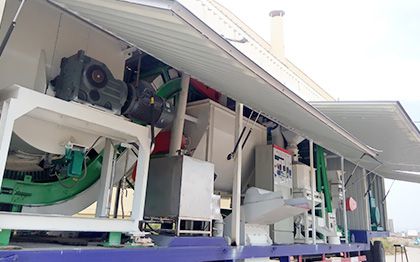Project Name: Cattle & Poultry Feed Mill
Factory Capacity: Make 10 tons feed pellets per hour (equal to 60,000 tons per year)
Application: This complete set of feed mill equipment is manufactured for processing livestock or poultry animals. (Suitable for making chicken feed, cattle feed and pig feed)
Photo View of the Feed Mill Equipment
View the phots below to have a simple understanding of the construction situation of the feed mill. You are always welcome to get in touch with us and tell us about your project plan, and we can help you make the best solution of livestock & poultry feed mill plant.
Livestock & Poultry Feed Sterilization
There are two common feed sterilization methods in animal feed production plant : feed processing and chemical treatment. Each method has its own advantages and disadvantages.

Feed the Chickens with Feed Pellets
Chemical treatment is one opportunity for the sterilization of feed. There are currently several suppliers that offer acid or aldehyde based sterilizing agents. The theory is to apply the sterilizing agents to the feed at the mixer. Due to the chemical nature of the compounds, heat stability is not a concern and adequate feed sterility is maintained throughout the process. (Larger Project: 100TPH Poultry Feed Making Factory )
From an ease of use and cost perspective, chemical sterilization may be the best option for livestock & poutlry feed sterilization. However, the effectiveness of these agents against micro-organisms also suggests that micro ingredient, such as enzymes, may be denatured when exposed to these compounds. As a result, nutritional strategies may need to compensate for the use of these agents. Another area of concern with chemical sterilization is that feed manufacturers may ignore downstream control points with the erroneous assumption that sterility is maintained in the entire process once the chemicals are added. There is little doubt that strategies, such as sterile air systems, will need to be employed along with chemical sterilizers to ensure continued downstream sterilization.














